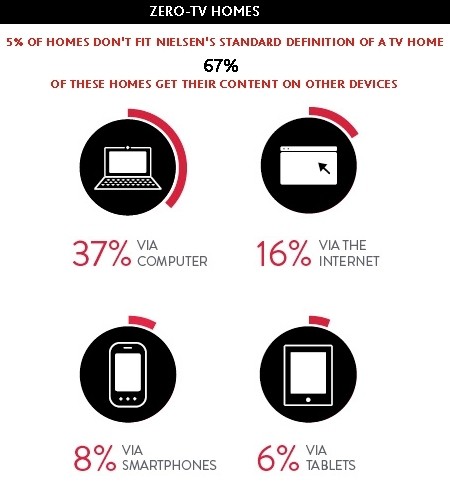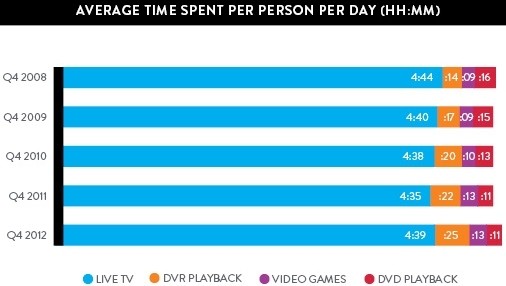There's no doubt that cord cutting is on the rise as services like Netflix and Hulu continue to cut into the revenue stream once dominated by cable and satellite television providers. The majority of Americans, a full 95 percent according to Nielsen, still watch television in their living rooms using these traditional sources but it's what the other five percent are doing that's of particular interest.
According to Nielsen's Fourth Quarter 2012 Cross-Platform Report, more than five million households were classified as Zero-TV homes - those that have tuned out of traditional TV but still view video content. That figure is up from just two million people in 2007, we're told.

Of these five million homes, 75 percent still have at least one television set which is used for a number of different activities like playing DVDs, video games or surfing the web.
Furthermore, 67 percent of these Zero-TV homes use alternate methods to obtain content. Of those, 37 percent used a computer, 16 percent used the Internet, eight percent relied on a smartphone and six percent used a tablet.

In related news, Nielsen found that the average American spends more than 41 hours each week engaging with content across all screens. That's almost five and a half hours each day. Most of that time (more than 34 hours) is spent watching television although only three hours are spent watching time-shifted content.
When looking at ethnic viewing behaviors, Nielsen found that the average African-American spends almost 55 hours watching television per week, Hispanics clock nearly 35 hours and Asians account for more than 27 hours of viewing each week.